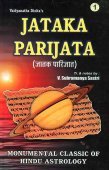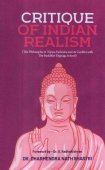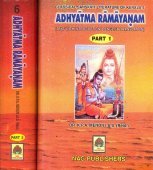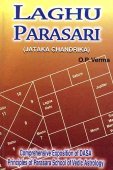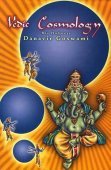Shastri, Śāstrī, Śastri, Śāstṛ, Śastrī: 17 definitions
Introduction:
Shastri means something in Buddhism, Pali, Hinduism, Sanskrit, Marathi, Hindi, Tamil. If you want to know the exact meaning, history, etymology or English translation of this term then check out the descriptions on this page. Add your comment or reference to a book if you want to contribute to this summary article.
The Sanskrit terms Śāstrī and Śastri and Śāstṛ and Śastrī can be transliterated into English as Sastri or Shastri or Sastr, using the IAST transliteration scheme (?).
In Hinduism
Dhanurveda (science of warfare)
Source: Wisdom Library: DhanurvedaŚastri (शस्त्रि) refers to a kind of weapon (a cutter, dissector). It is a Sanskrit word defined in the Dhanurveda-saṃhitā, which contains a list of no less than 117 weapons. The Dhanurveda-saṃhitā is said to have been composed by the sage Vasiṣṭha, who in turn transmitted it trough a tradition of sages, which can eventually be traced to Śiva and Brahmā.

Dhanurveda (धनुर्वेद) refers to the “knowledge of warfare” and, as an upaveda, is associated with the Ṛgveda. It contains instructions on warfare, archery and ancient Indian martial arts, dating back to the 2nd-3rd millennium BCE.
Shaivism (Shaiva philosophy)
Source: Shodhganga: Temple management in the ĀgamasŚāstrī (शास्त्री) refers to a type of dīkṣā (initiation) performed by a healthy Ādiśaiva as part of his essential priestly duties in the Śiva temple.—Dīkṣā is popularly understood as “dīyate kṣīyate iti dīkṣā”—“that which grants mokṣa, while destroying the karma of the initiate”. Śāstrī-dīkṣā refers to dīkṣā done along with teaching of the śāstras.

Shaiva (शैव, śaiva) or Shaivism (śaivism) represents a tradition of Hinduism worshiping Shiva as the supreme being. Closely related to Shaktism, Shaiva literature includes a range of scriptures, including Tantras, while the root of this tradition may be traced back to the ancient Vedas.
Purana and Itihasa (epic history)
Source: archive.org: Shiva Purana - English TranslationŚāstṛ (शास्तृ) refers to the “ruler” and is used to describe Brahmā, according to the Śivapurāṇa 2.3.16 (“Brahmā consoles the gods”).—Accordingly, as the Gods said to Brahmā: “[...] The regions of our three worlds have been forcibly taken, O Brahmā, by this Tāraka of sinful and ruthless temperament. O lord of the worlds, we were in heaven but now that we have been turned out by that demon we shall go to any place which you may kindly suggest. You are our final resort. You are our ruler [śāstṛ], creator [dhātṛ], and protector [trātṛ]. But we are scorched in the fire of the name Tāraka. We are extremely agitated. [...]”.

The Purana (पुराण, purāṇas) refers to Sanskrit literature preserving ancient India’s vast cultural history, including historical legends, religious ceremonies, various arts and sciences. The eighteen mahapuranas total over 400,000 shlokas (metrical couplets) and date to at least several centuries BCE.
Yoga (school of philosophy)
Source: Google Books: The Khecarividya of AdinathaŚāstṛ (शास्तृ) is the name of a village deity from the Tamil region, according to the Matsyendrasaṃhitā. [...] Evidence helpful in dating the text is scant, but there are clues as to where some parts of it were composed. [...] There is strong evidence for other parts of the text having been composed in the Tamil region of south India. At 55.3 the frame story mentions a king from the south whose city is called Allūra. The city has not been identified, but the suffix -ūra suggests the Tamil region. References to the predominantly south Indian paścimāmnāya stream of Śaivism are found throughout the text. Southern origins can also be inferred from the injunction at 8.31 to worship the god Śāstṛ, a village deity found only in the Tamil region. Furthermore the yoga taught in the text is often described as śāmbhava, a name commonly used in south India to describe Śaiva yoga.

Yoga is originally considered a branch of Hindu philosophy (astika), but both ancient and modern Yoga combine the physical, mental and spiritual. Yoga teaches various physical techniques also known as āsanas (postures), used for various purposes (eg., meditation, contemplation, relaxation).
In Buddhism
Mahayana (major branch of Buddhism)
Source: academia.edu: A Study and Translation of the GaganagañjaparipṛcchāŚāstṛ (शास्तृ) refers to a “teacher”, according to the Gaganagañjaparipṛcchā: the eighth chapter of the Mahāsaṃnipāta (a collection of Mahāyāna Buddhist Sūtras).—Accordingly: “Then, the Bodhisattva, Dharmarāja by name, addressed himself to the Bodhisattva Gaganagañja: ‘Son of good family, let me listen to the treasury of hearing the dharma from open space’. Gaganagañja said: ‘If you conceive the concept of this open space as your teacher (śāstṛ-saṃjñā), with respect and reverence, son of good family, then you will listen to the treasury of hearing the dharma’. [...]”.

Mahayana (महायान, mahāyāna) is a major branch of Buddhism focusing on the path of a Bodhisattva (spiritual aspirants/ enlightened beings). Extant literature is vast and primarely composed in the Sanskrit language. There are many sūtras of which some of the earliest are the various Prajñāpāramitā sūtras.
Languages of India and abroad
Marathi-English dictionary
Source: DDSA: The Molesworth Marathi and English Dictionaryśāstrī (शास्त्री).—m (S) One who has studied the Shastras or any Shastra. Used esp. in comp. as nyāyaśāstrī, dharmaśāstrī. 2 It is affixed as an honorable designation to the names of Brahmans versed in any Shastra; as bāḷaśāstrī, gaṅgādharaśāstrī, vāsudēvaśāstrī.
Source: DDSA: The Aryabhusan school dictionary, Marathi-EnglishŚāstrī (शास्त्री).—m One who has studied the Śāstras or any Śāstra, as nyāyaśāstrī.
Marathi is an Indo-European language having over 70 million native speakers people in (predominantly) Maharashtra India. Marathi, like many other Indo-Aryan languages, evolved from early forms of Prakrit, which itself is a subset of Sanskrit, one of the most ancient languages of the world.
Sanskrit dictionary
Source: DDSA: The practical Sanskrit-English dictionaryŚastrī (शस्त्री).—A knife; पण्यस्त्रीषु विवेककल्पलतिकाशस्त्रीषु रज्येत कः (paṇyastrīṣu vivekakalpalatikāśastrīṣu rajyeta kaḥ) Subhāṣ; शस्त्रीश्यामैरंशुभिराशु द्रुतम् (śastrīśyāmairaṃśubhirāśu drutam) Śiśupālavadha 4.44.
--- OR ---
Śāstṛ (शास्तृ).—m. [śās-tṛc iḍabhāvaḥ]
1) A teacher, an instructor.
2) A ruler, king, sovereign.
3) A father.
4) A Buddha or Jina; or a deified teacher of the Bauddhas or Jainas.
Source: Cologne Digital Sanskrit Dictionaries: Shabda-Sagara Sanskrit-English DictionaryŚāstṛ (शास्तृ).—mfn. (-stā-strī-stṛ) 1. A ruler, one who rules or governs. 2. A teacher, teaching, instructing. m.
(-stā) A Bud'dha or Jina, or the deified teacher of one or both those sects. E. śās to govern, &c. aff. tṛc, and the augment omitted.
--- OR ---
Sastri (सस्त्रि).—mfn. (-striḥ-striḥ-stri) Who or what goes. E. sṛ to go, i aff., v. redup.
Source: Cologne Digital Sanskrit Dictionaries: Benfey Sanskrit-English DictionaryŚāstṛ (शास्तृ).—[śās + tṛ], m., f. trī, and n. 1. Who or what orders, a ruler. 2. A teacher.
Source: Cologne Digital Sanskrit Dictionaries: Cappeller Sanskrit-English DictionaryŚastṛ (शस्तृ).—[masculine] cutter, killer.
--- OR ---
Śastrī (शस्त्री).—v. 2 śastra.
--- OR ---
Śāstṛ (शास्तृ).—[masculine] = śāsitṛ.
--- OR ---
Sastṛ (सस्तृ).—spread or expand (together), strew, cover. — Cf. āstīrṇa & ā/stṛta, upastīrṇa, pra/stīrṇa, vistīrṇa & vistṛta, saṃstīrṇa & saṃstṛta.
Sastṛ is a Sanskrit compound consisting of the terms sa and stṛ (स्तृ).
Source: Cologne Digital Sanskrit Dictionaries: Monier-Williams Sanskrit-English Dictionary1) Śastṛ (शस्तृ):—[from śas] m. a cutter, dissecter, [Ṛg-veda; Atharva-veda]
2) Śastrī (शस्त्री):—[from śastra > śas] a f. See below
3) [from śas] b f. a dagger, knife, [Bhartṛhari]
4) Śāstṛ (शास्तृ):—[from śās] m. a chastiser, punisher, [Mahābhārata; Kāvya literature] etc.
5) [v.s. ...] a ruler, commander, [Taittirīya-saṃhitā] etc. etc.
6) [v.s. ...] a teacher, instructor, [Āpastamba; Mahābhārata; Harivaṃśa] etc. (also applied to Punishment and to the Sword personified)
7) [v.s. ...] Name of Buddha, [Rājataraṅgiṇī] ([according to] to [cf. Lexicographers, esp. such as amarasiṃha, halāyudha, hemacandra, etc.] also ‘a Jina or the deified teacher of either of these sects’)
8) [v.s. ...] a father, [Monier-Williams’ Sanskrit-English Dictionary]
Source: Cologne Digital Sanskrit Dictionaries: Yates Sanskrit-English Dictionary1) Śāstṛ (शास्तृ):—[(stā-strī-stṛ) m.] A Buddha. m. f. n. A ruler; a teacher.
2) Sastri (सस्त्रि):—[(striḥ-striḥ-stri) a.] Going.
Source: DDSA: Paia-sadda-mahannavo; a comprehensive Prakrit Hindi dictionary (S)Śāstṛ (शास्तृ) in the Sanskrit language is related to the Prakrit word: Satthu.
Sanskrit, also spelled संस्कृतम् (saṃskṛtam), is an ancient language of India commonly seen as the grandmother of the Indo-European language family (even English!). Closely allied with Prakrit and Pali, Sanskrit is more exhaustive in both grammar and terms and has the most extensive collection of literature in the world, greatly surpassing its sister-languages Greek and Latin.
Hindi dictionary
Source: DDSA: A practical Hindi-English dictionaryŚāstrī (शास्त्री):—(a) see [śastrajña] (nm) a scholar of or authority on the scriptures (or shastras).
...
Kannada-English dictionary
Source: Alar: Kannada-English corpusŚastri (ಶಸ್ತ್ರಿ):—[noun] a cutting or stabbing instrument with a short, thin, sharp blade, single-edged or double-edged, set in a handle; a knife.
--- OR ---
Śāstṛ (ಶಾಸ್ತೃ):—[noun] a man who preaches; a preacher.
--- OR ---
Śāstri (ಶಾಸ್ತ್ರಿ):—
1) [noun] = ಶಾಸ್ತ್ರಜ್ಞ [shastrajna].
2) [noun] a suffix to the names of the members of certain families.
Kannada is a Dravidian language (as opposed to the Indo-European language family) mainly spoken in the southwestern region of India.
Tamil dictionary
Source: DDSA: University of Madras: Tamil LexiconŚāstri (ஶாஸ்த்ரி) noun < śāstrin. See சாஸ்திரி. [sasthiri.]
Tamil is an ancient language of India from the Dravidian family spoken by roughly 250 million people mainly in southern India and Sri Lanka.
See also (Relevant definitions)
Partial matches: Sha, Ca, Stri.
Starts with (+5): Shastreey-kriti, Shastreey-sangit, Shastribana, Shastriga, Shastrika, Shastrikaran, Shastrikarana, Shastrike, Shastrin, Shastrisamjna, Shastrishyama, Shastrita, Shastritana, Shastritartha, Shastritva, Shastriy, Shastriya, Shastriya Kalpana, Shastriya-jnana, Shastriya-kriti.
Ends with (+10): Abhishastri, Anushastri, Arthamapanashastri, Arthashastri, Arthshaastri, Avishastri, Bhagavataharishastri, Bhaskarashastri, Catushshastri, Dharamshastri, Dharmashastri, Kutumbashastri, Mahashastri, Mithyashastri, Prashastri, Rajaramashastri, Sadrikshastri, Sadrishastri, Samudrashastri, Shabdashastri.
Full-text (+133): Vishastri, Shastrishyama, Shastritva, Shastrike, Paribhashendushekhara, Narasimhashastriprakashika, Shastrashastri, Puralipi, Pattabhiramashastripattra, Vakyarthacandrika, Prashasaka, Abhishastri, Arthashastra, Purabhilekha, Satthu, Anushastri, Tarkashastra, Puralekha, Anadi, Pancanana.
Relevant text
Search found 133 books and stories containing Shastri, Śāstrī, Śastri, Śāstṛ, Śastrī, Sastri, Sastr, Śastṛ, Sastṛ, Sa-stri, Sa-stṛ, Śāstri, Shasthri, Shaasthri, Shasdri, Shasdhri; (plurals include: Shastris, Śāstrīs, Śastris, Śāstṛs, Śastrīs, Sastris, Sastrs, Śastṛs, Sastṛs, stris, stṛs, Śāstris, Shasthris, Shaasthris, Shasdris, Shasdhris). You can also click to the full overview containing English textual excerpts. Below are direct links for the most relevant articles:
Vakyapadiya of Bhartrihari (by K. A. Subramania Iyer)
Verse 3.14.382 < [Book 3 - Pada-kāṇḍa (14): Vṛtti-samuddeśa (On Ccomplex Formation)]
Verse 3.14.422 < [Book 3 - Pada-kāṇḍa (14): Vṛtti-samuddeśa (On Ccomplex Formation)]
Verse 3.14.421 < [Book 3 - Pada-kāṇḍa (14): Vṛtti-samuddeśa (On Ccomplex Formation)]
The backdrop of the Srikanthacarita and the Mankhakosa (by Dhrubajit Sarma)
Anumana in Indian Philosophy (by Sangita Chakravarty)
Nyaya-Vaisheshika categories (Study) (by Diptimani Goswami)
Date of Annaṃbhaṭṭa < [Chapter 1 - Introduction]
Works of Annaṃbhaṭṭa < [Chapter 1 - Introduction]
The Syncretic School of Nyāya-Vaiśeṣika < [Chapter 1 - Introduction]
Brihadaranyaka Upanishad (by Swāmī Mādhavānanda)
Narayaniya (Narayaneeyam) (by Vishwa Adluri)
Related products
(+2 more products available)
